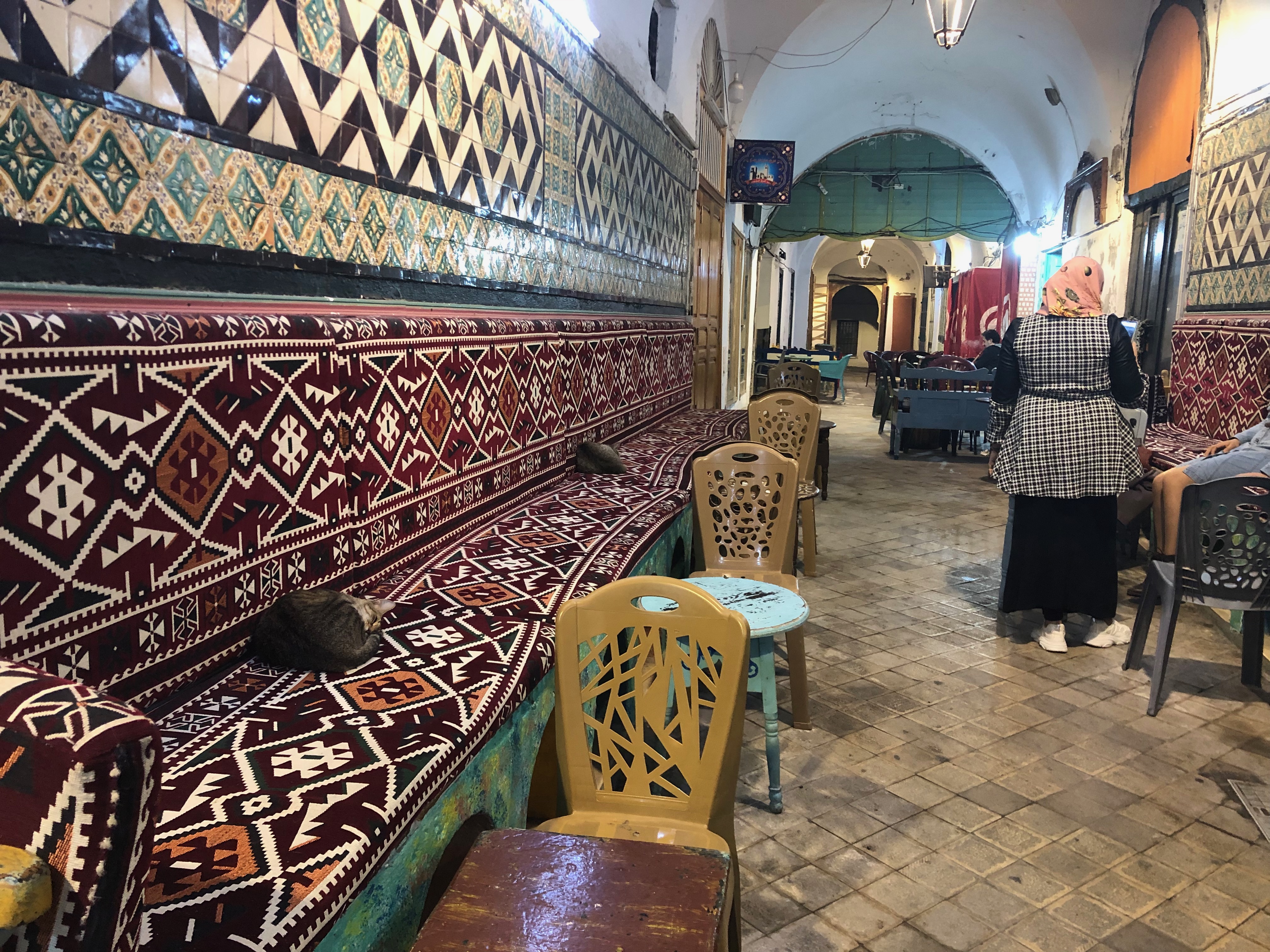
Tunisia | Echos of Hannibal and Punic

Northern Africa. I wanted a gentle introduction to Africa and Tunisia (along with Egypt) is probably the best choice.
Some aspects of the Tunisia trip that I find really unique:
- Roman and punic influences are everywhere
- Probably the most liberal MENA country
- Given that the Arab Spring started in Tunisia in 2010, I am glad that people’s lives seem to be genuinely better.
- French and Arabic speaking, given the historical shifts: Phoenician / Punic -> Muslim -> French -> contemporary
- My first experience with a hammam, which is a Turkish-style bath where one is almost naked.
Tunisia
We arrived in the late afternoons, and are staying for 2 nights in the Medina (old town center) of Tunisia. The streets are narrow, and vendors start closing down around 7 p.m. My friend Abe and I bought a chapati (flatbread with fillings grilled) for dinner.
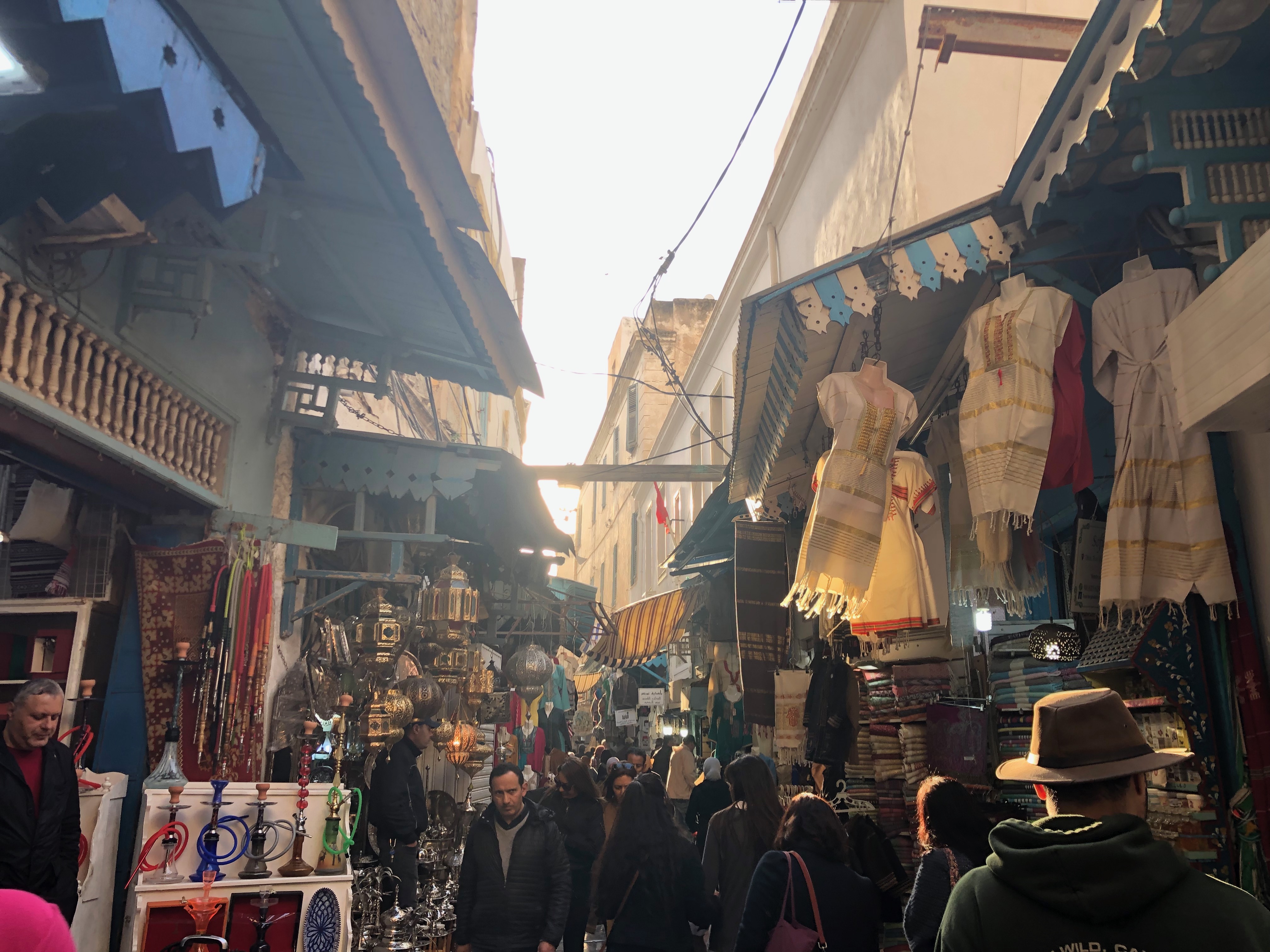

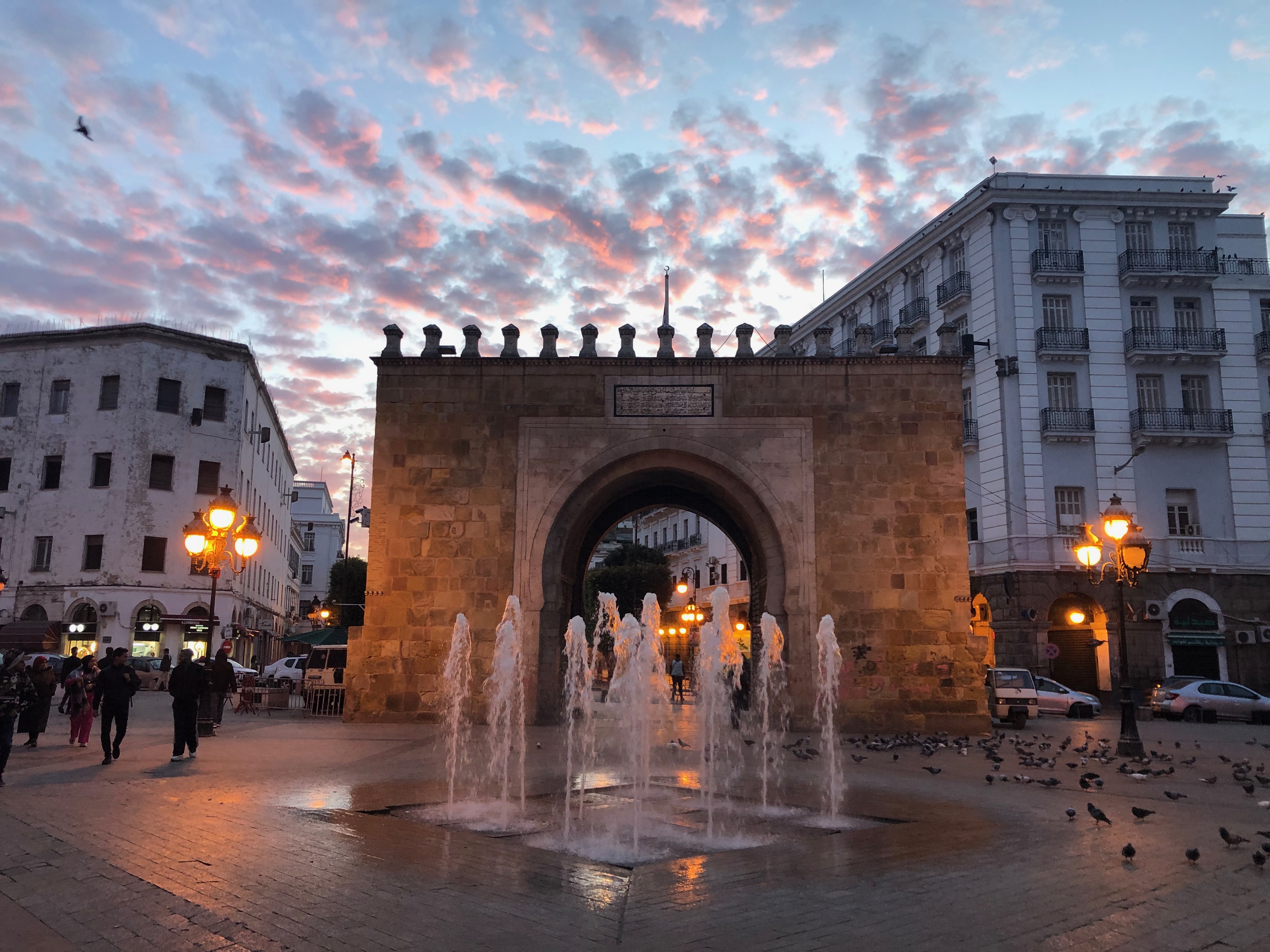
French Gate, a relic of French rule
The Medina is huge and sprawling - I imagine probably 10 blocks by 10 blocks. The colors are white and blue with street vendors everywhere.
After dark, we enjoyed some Turkish tea, a popular evening gathering choice since alcohol is banned. The mint leaves and the sugar cubes are a nice touch.
The next day, we visited the 3000-year-old ruins. The original Punic buildings were dismantled by the Romans to construct churches and temples, which were later modified or replaced by the Muslims/Ottomans. The cycle continues, but a few relics remain.
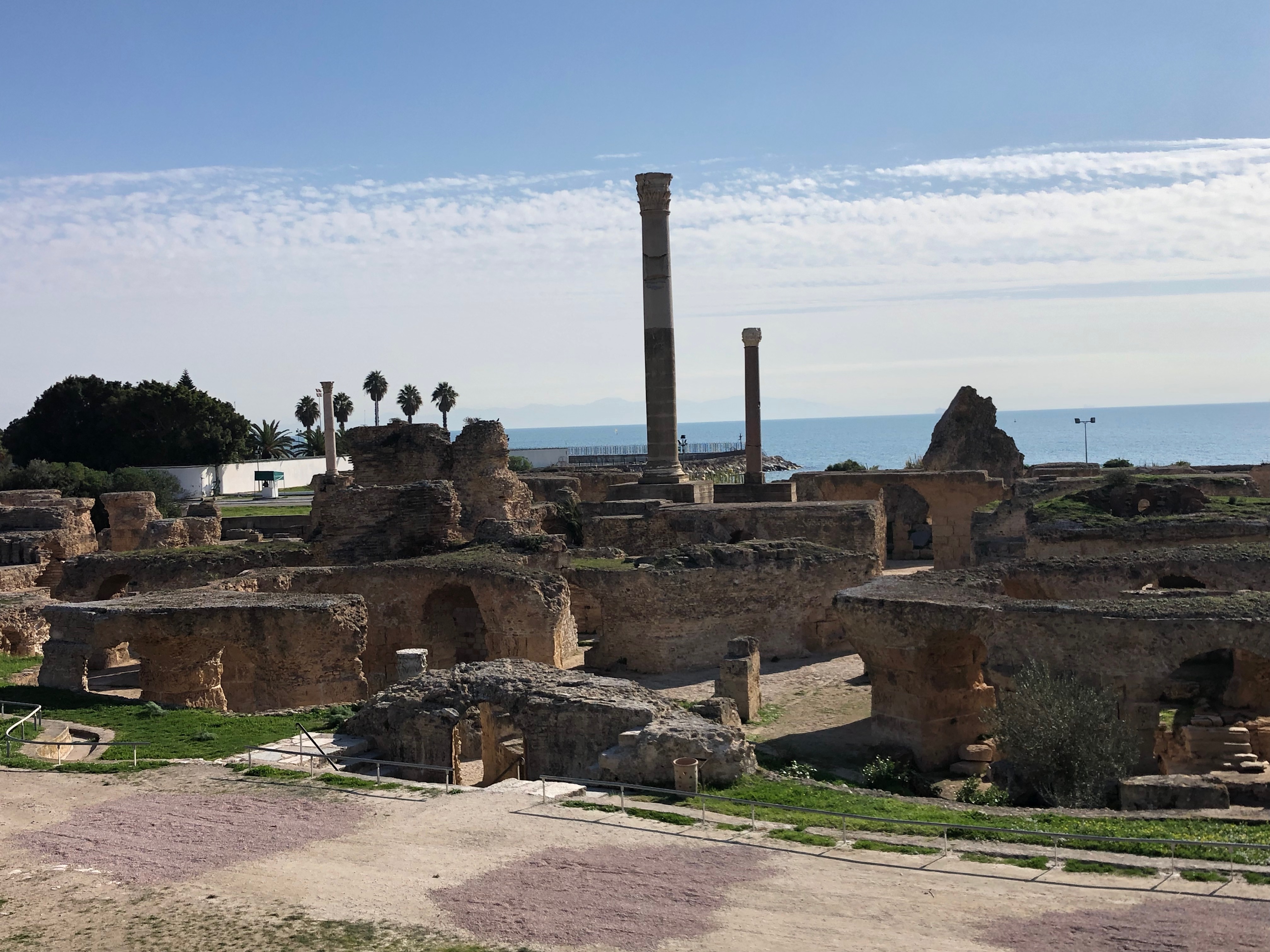
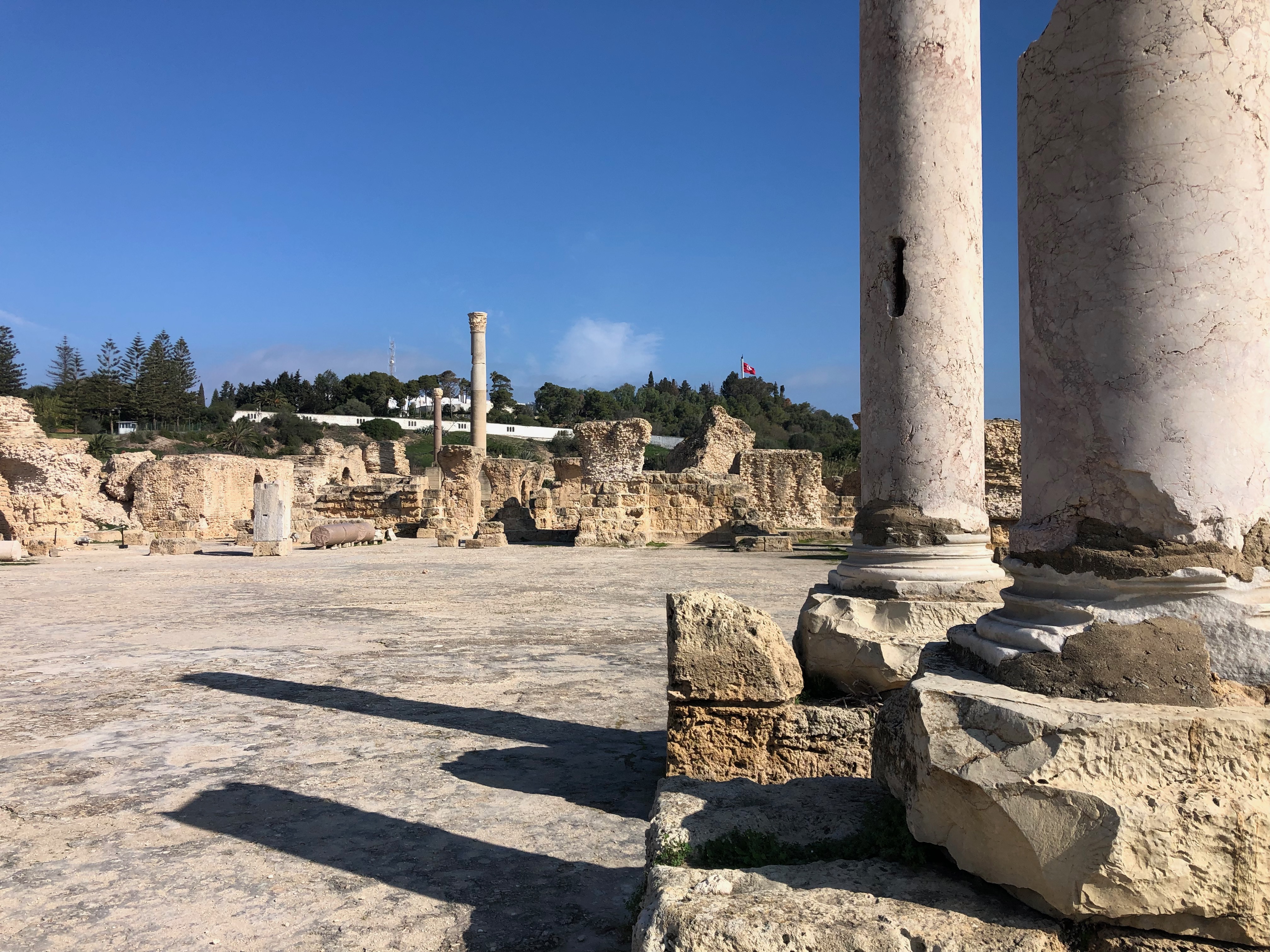 The Roman bath house is huge and the heating / sauna was very extensive
The Roman bath house is huge and the heating / sauna was very extensive
We visited Sidi Bou Said, the Greek Santorini but in Africa. All the houses are blue and white, and there are many tourists here.
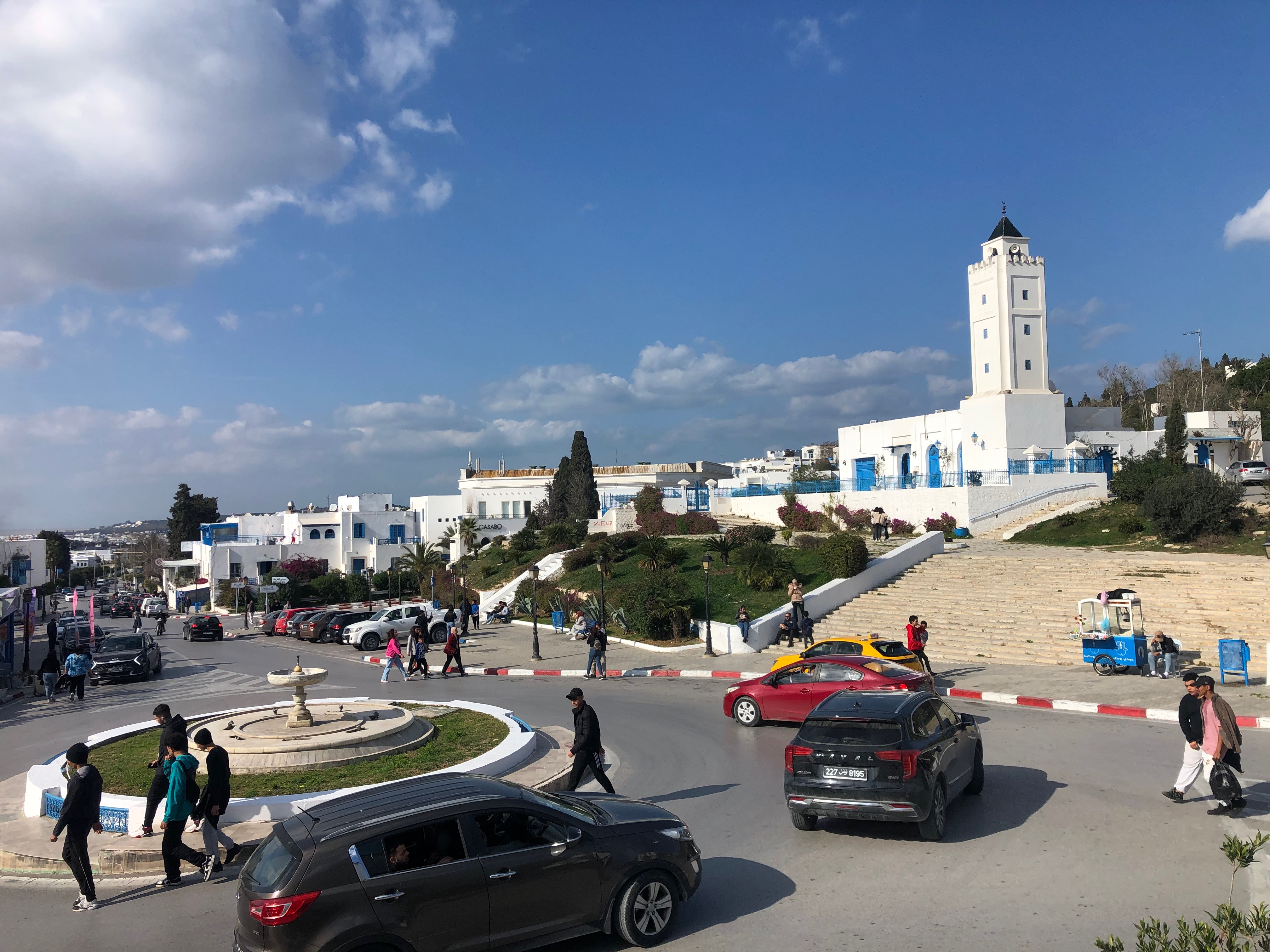


Palermo, Italy in the distance from Africa
Sidi Bou Said is so close to Italy that we can clearly see Palermo. I wanted to buy a souvenir at arguably the most popular tourist destination in the country. My friend Abe put in a master class in negotiations, getting our souvenir from $220 dinars to $50 (still overpriced, but okay).

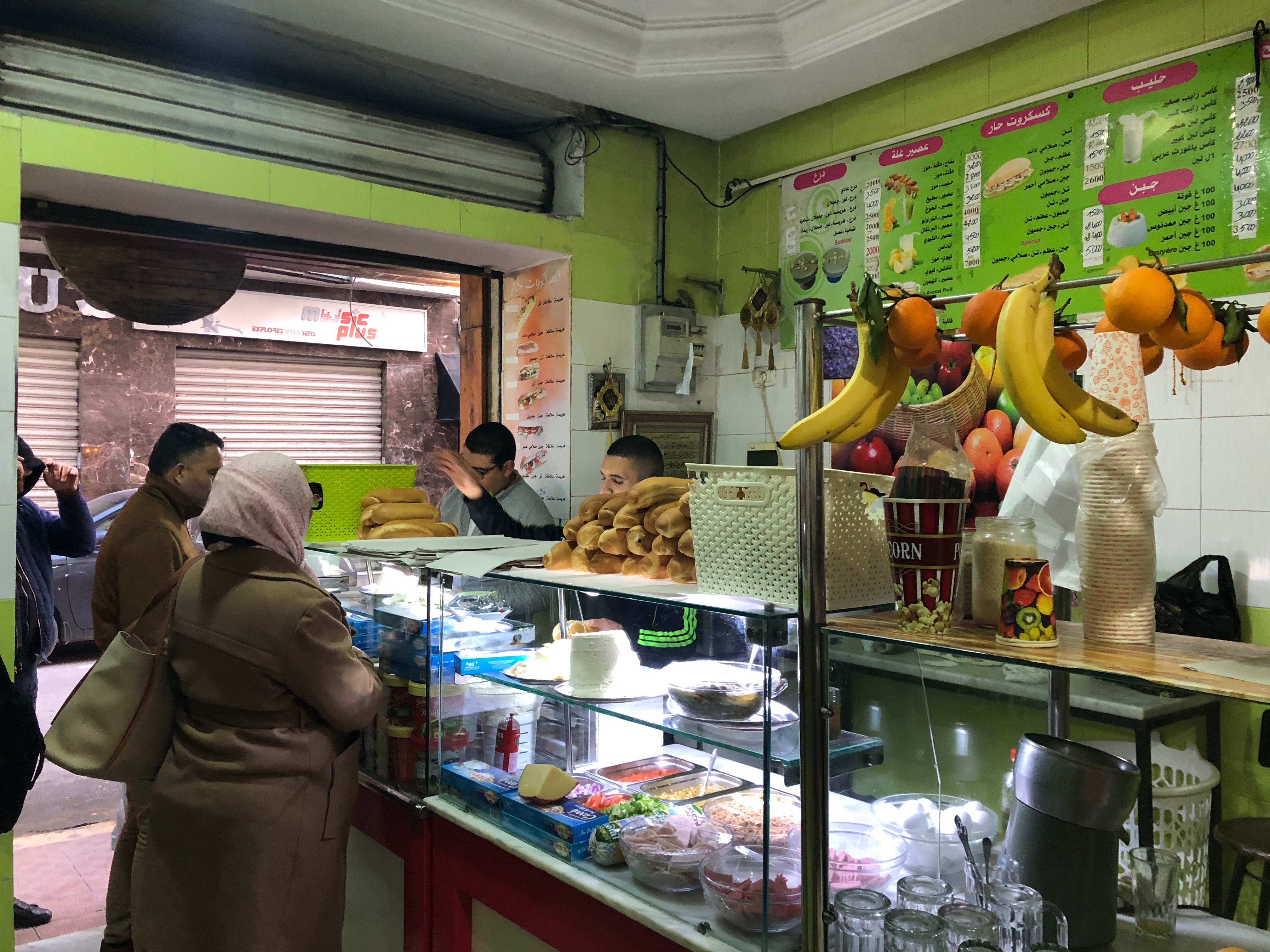 Porridge-like breakfast, but a bit sour and sweet
Porridge-like breakfast, but a bit sour and sweet

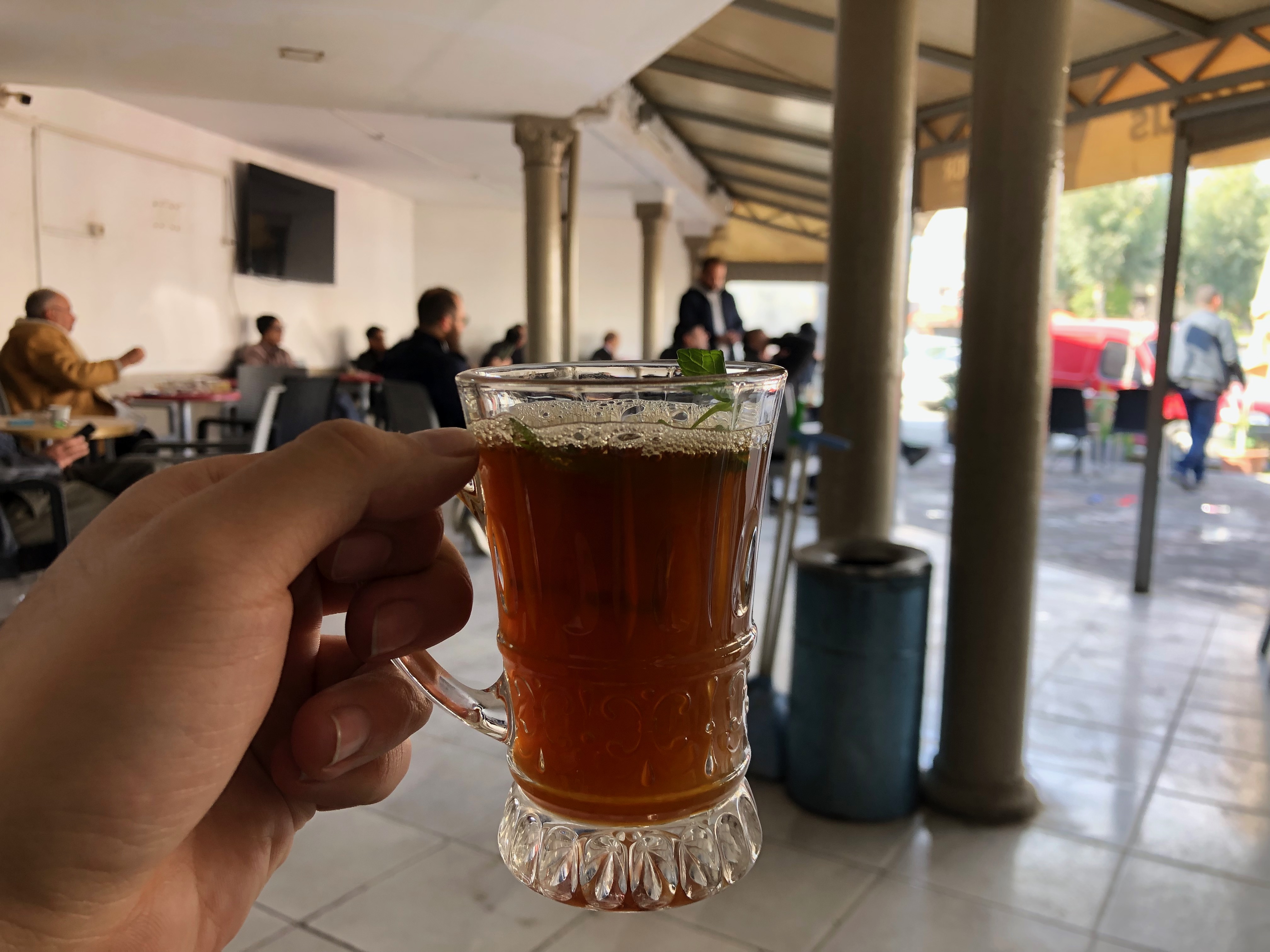 Egg, pork(?), olive and bread dip | Tea with mint
Egg, pork(?), olive and bread dip | Tea with mint
We had a wonderful meal (bread is dipped with all the dishes here), and had a fantastic afternoon tea.
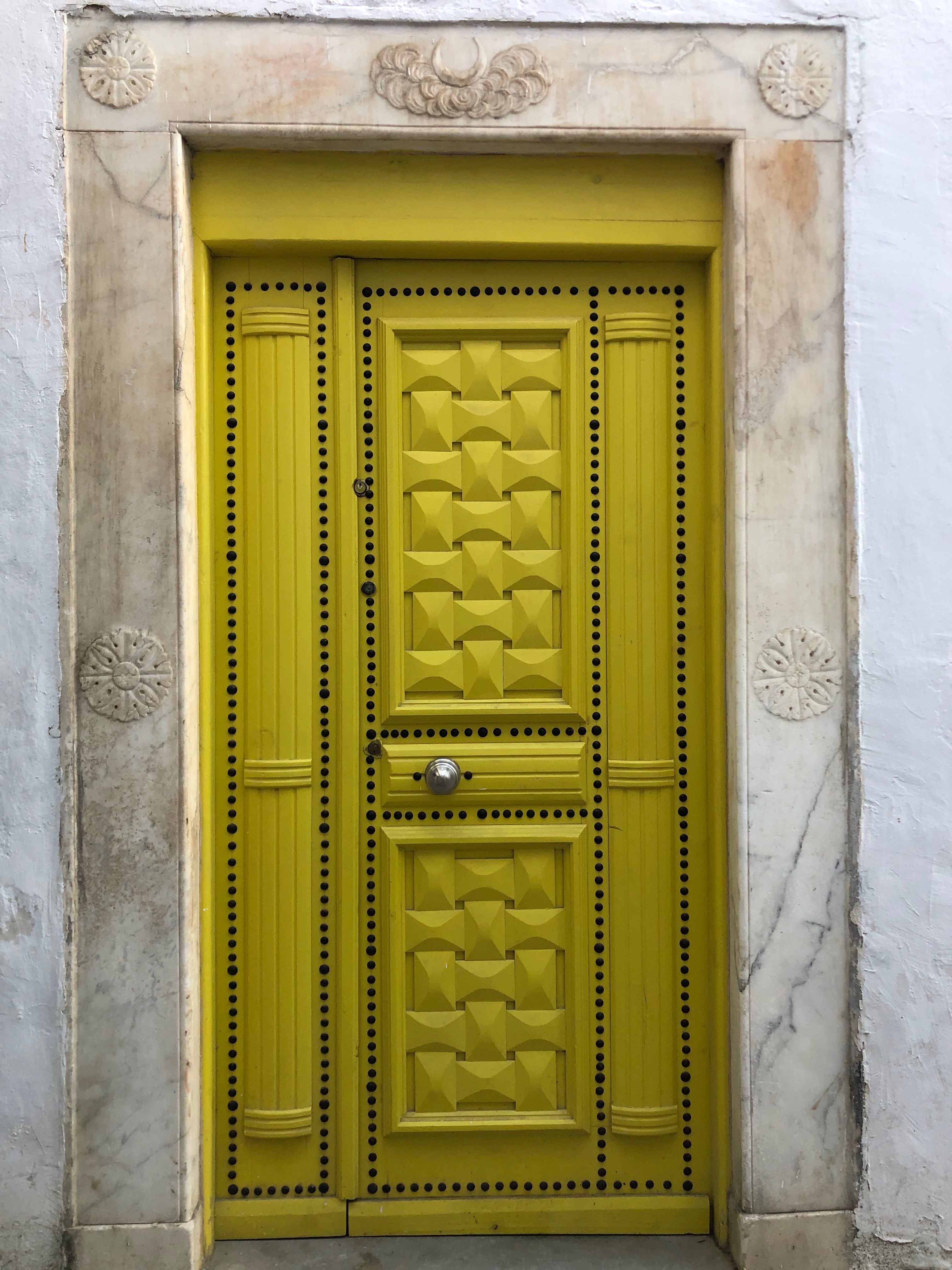

Almost getting into trouble
I took some pictures of the city’s main corridor and the Avenue Habib Bourguiba Clocktower. There are quite a few soldiers parked there, and a section of the road were blocked off.
A soldiers walked towards me and said to not take photos of the police there. I showed him my photos and apologized.
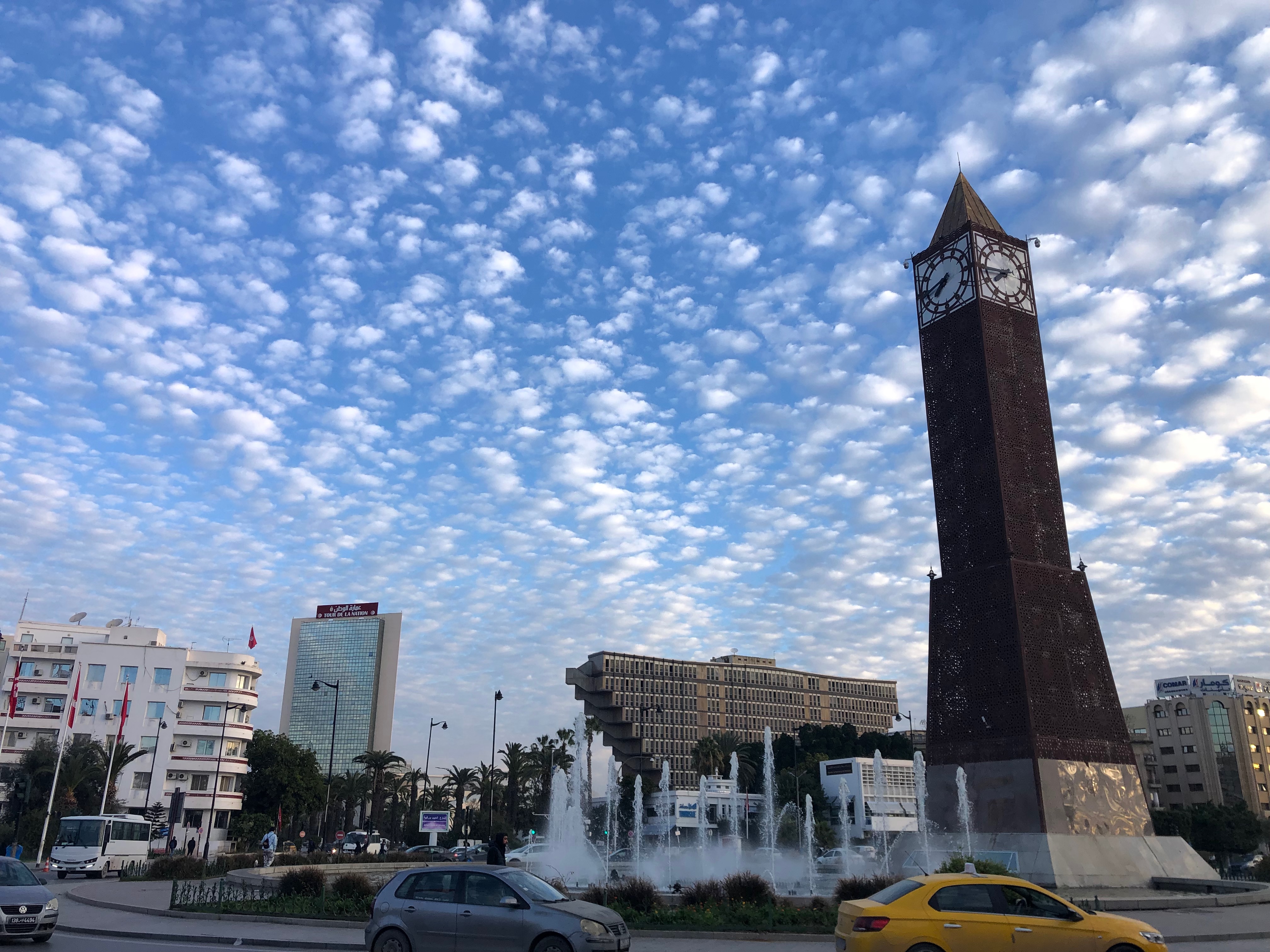
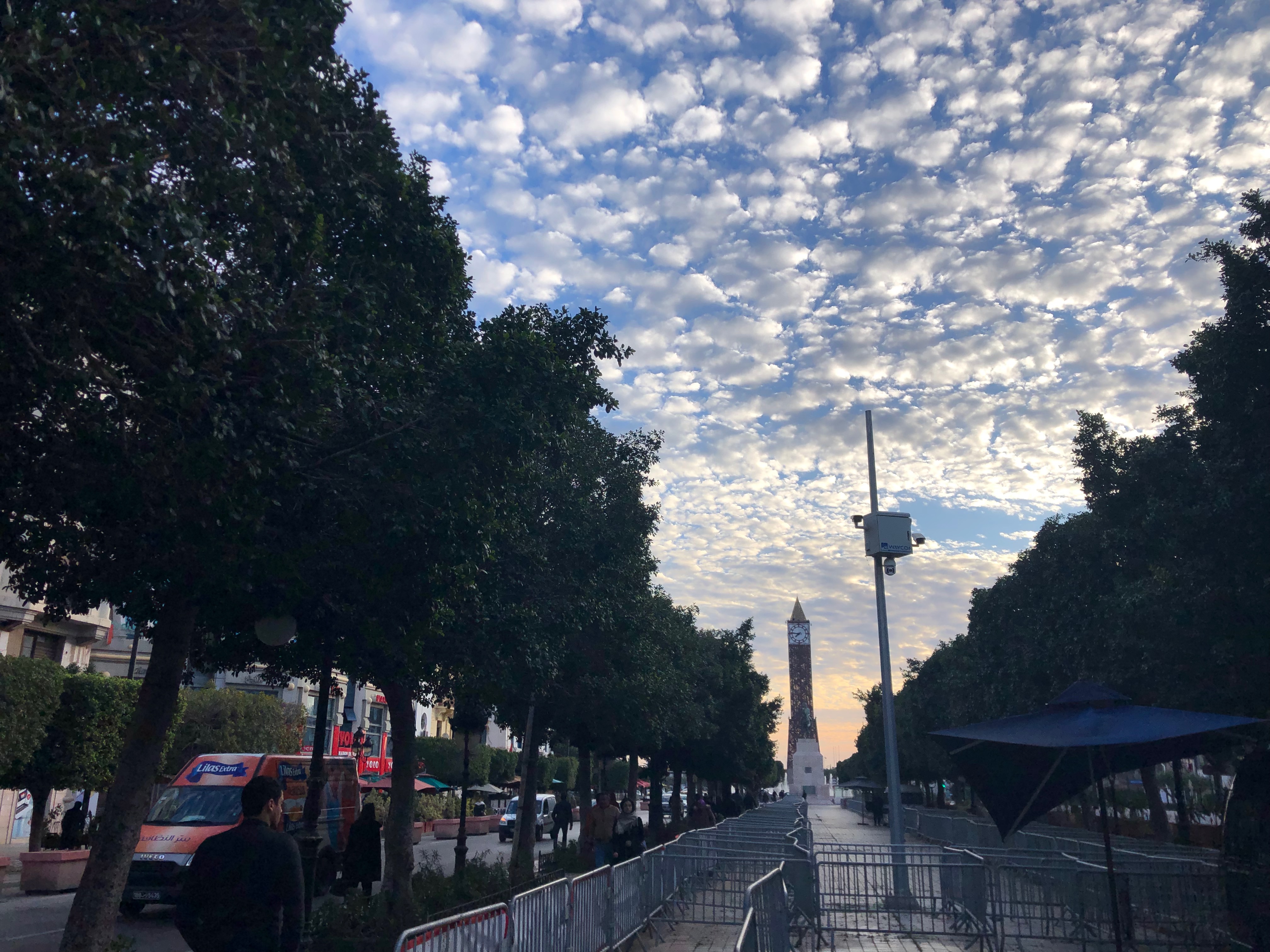
It was later explained by my hotel manager that the Arab Spring protest took place here. Because of corruption and poverty, a Tunisian vendor who lost his merchandise set himself on fire, and kicked off the Arab Spring. It was a clash between the former government forces and angry citizens back in 2010, which resulted in the end of the former regime.
Heading south to the desert: Sousse and Kairoan
We woke up early in the morning to take the louage (Tunisian van / bus) from Tunis to Sousse. The louage station is hectic and a bit overwhelming not knowing Arabic.
Fortunately, we were welcomed by our hostel manager in Sousse. Toutou is a great entrepreneur and a wonderful guide, running the 5-room hostel and a few guest houses by himself.

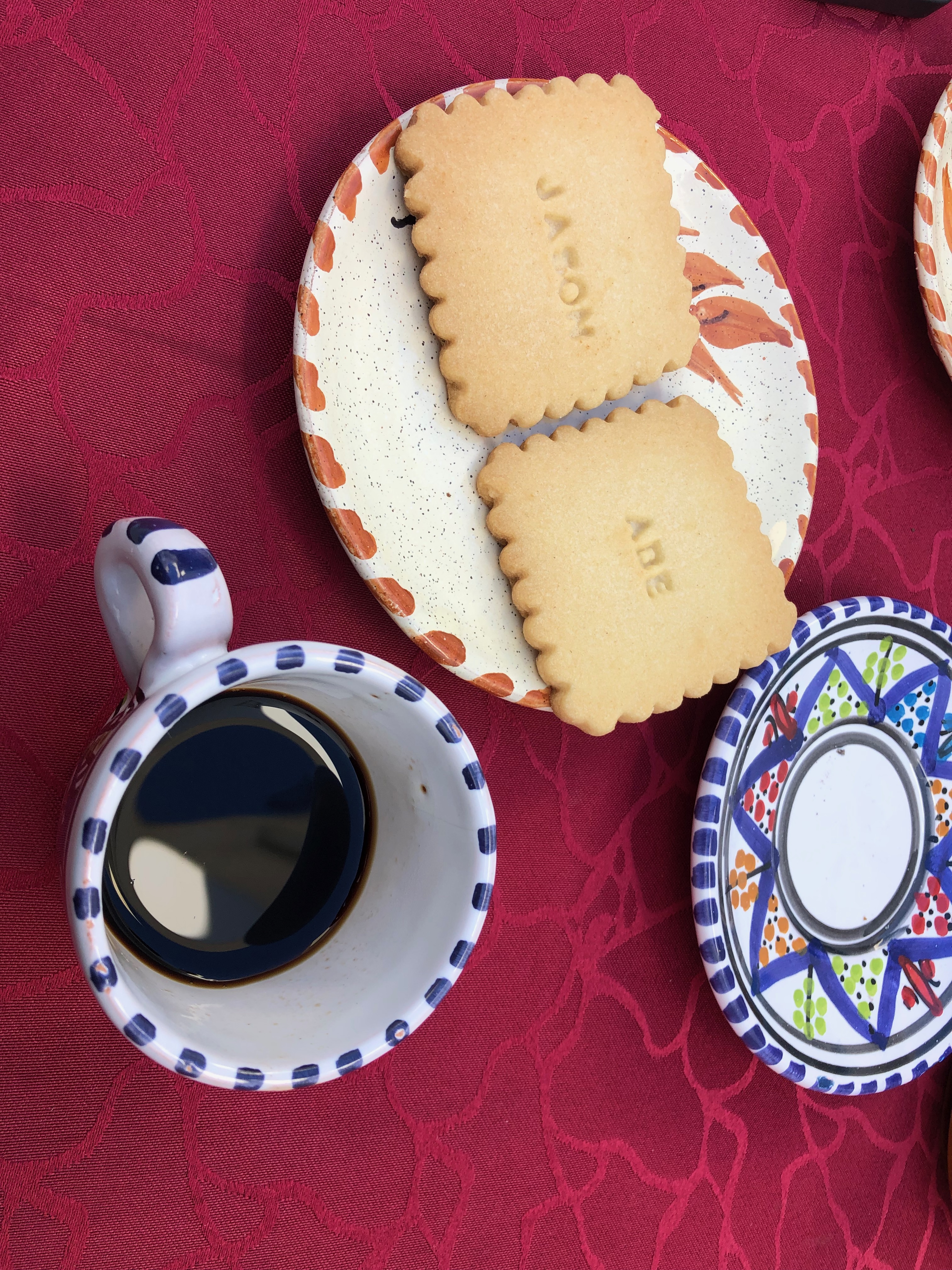
Thank you Toutou for the cookies with our names :)
The hostel was renovated just before the pandemic. Because Tunisia gets drier and drier as the further south we go, water is off during non-business hours. The house has a well with a water pump if we wanted to take a shower in the evening.
We went on a tour together with an Italian couple and an older Swiss gentleman together to Kairouan.
We took taxis and a louage to Kairouan, and arrived at the fourth most holy Islam site (a bit contested, because the first three sites are Mecca, Jerusalem and Medina, two of which are in Saudi).
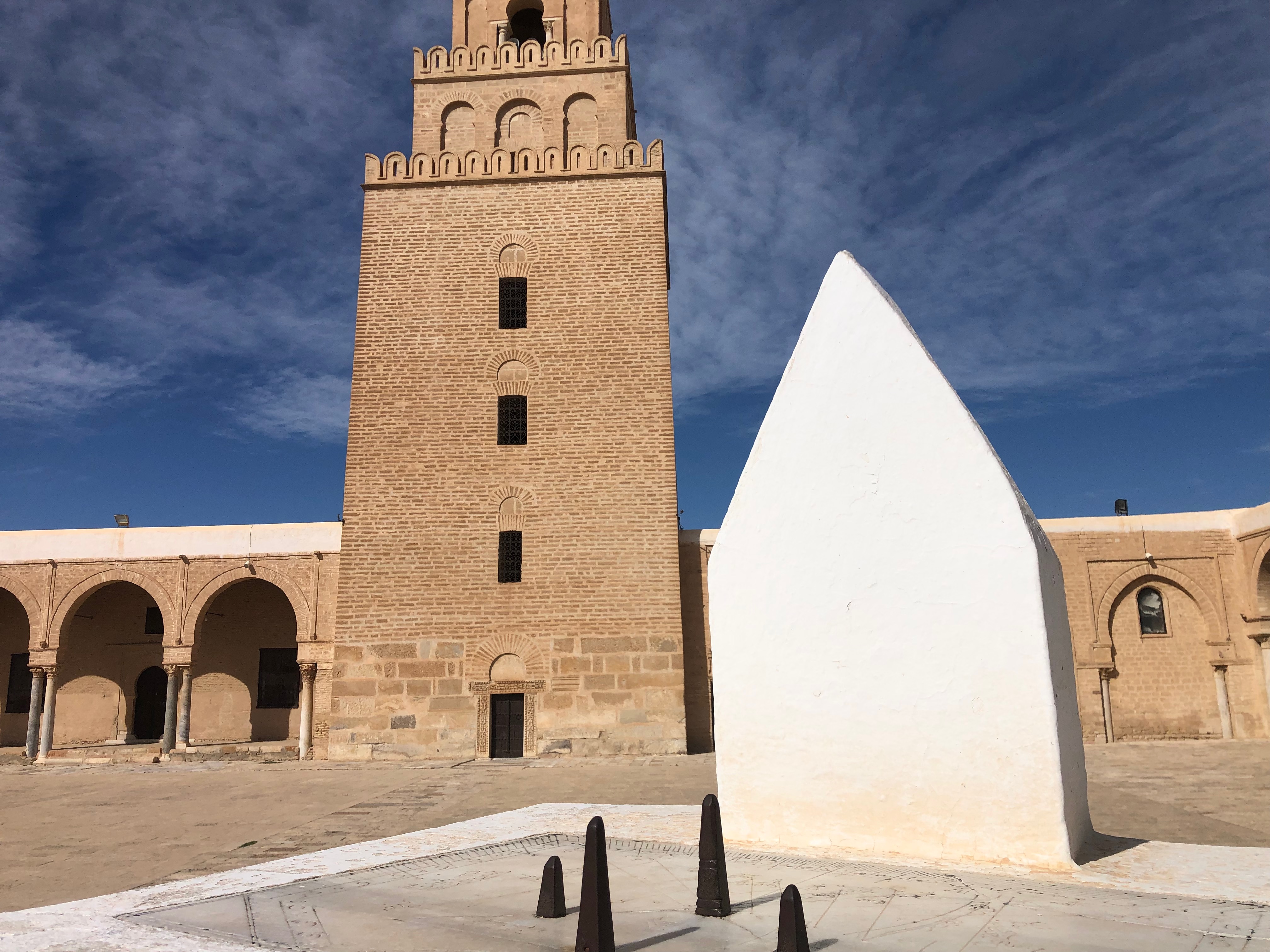
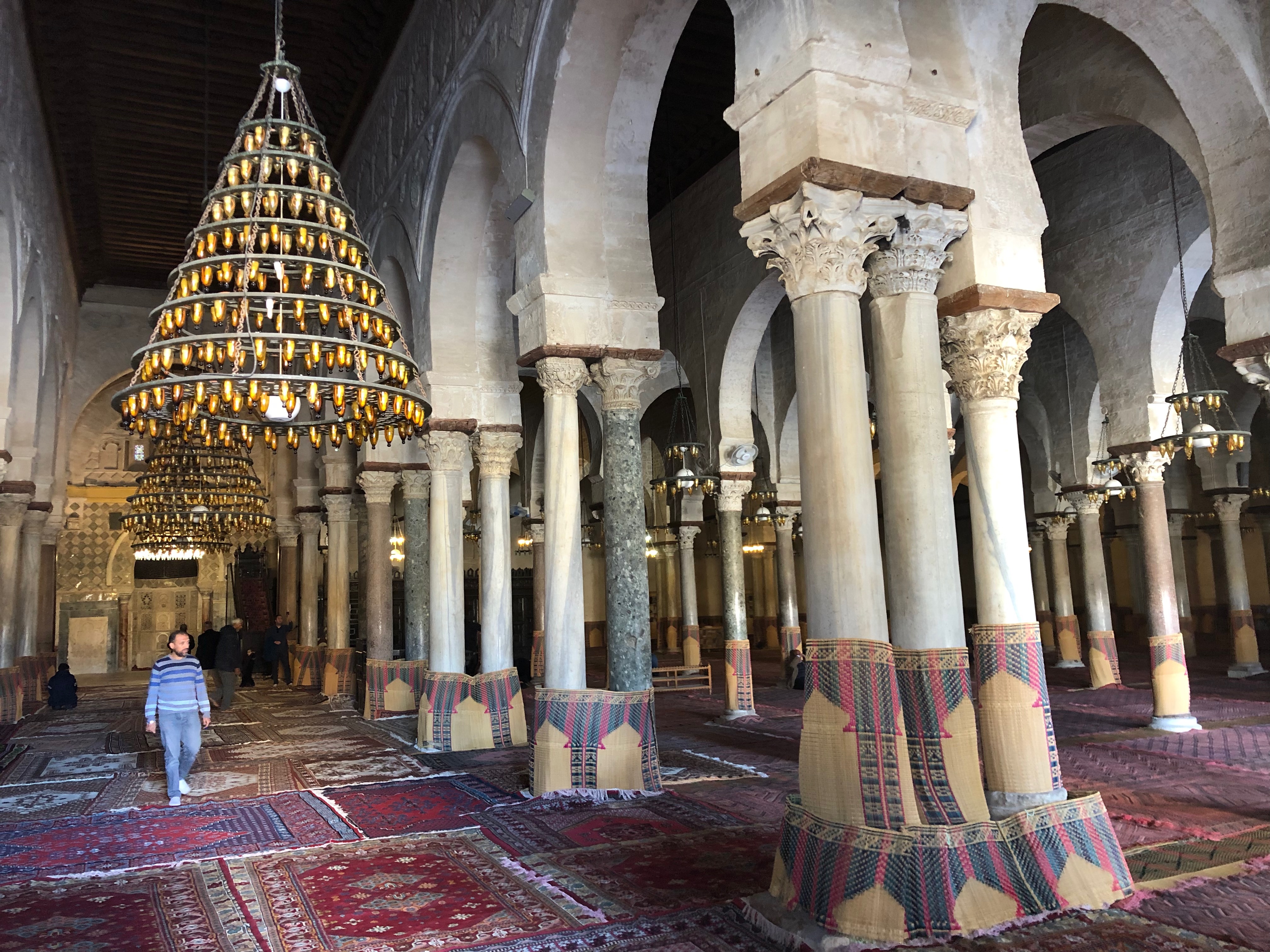
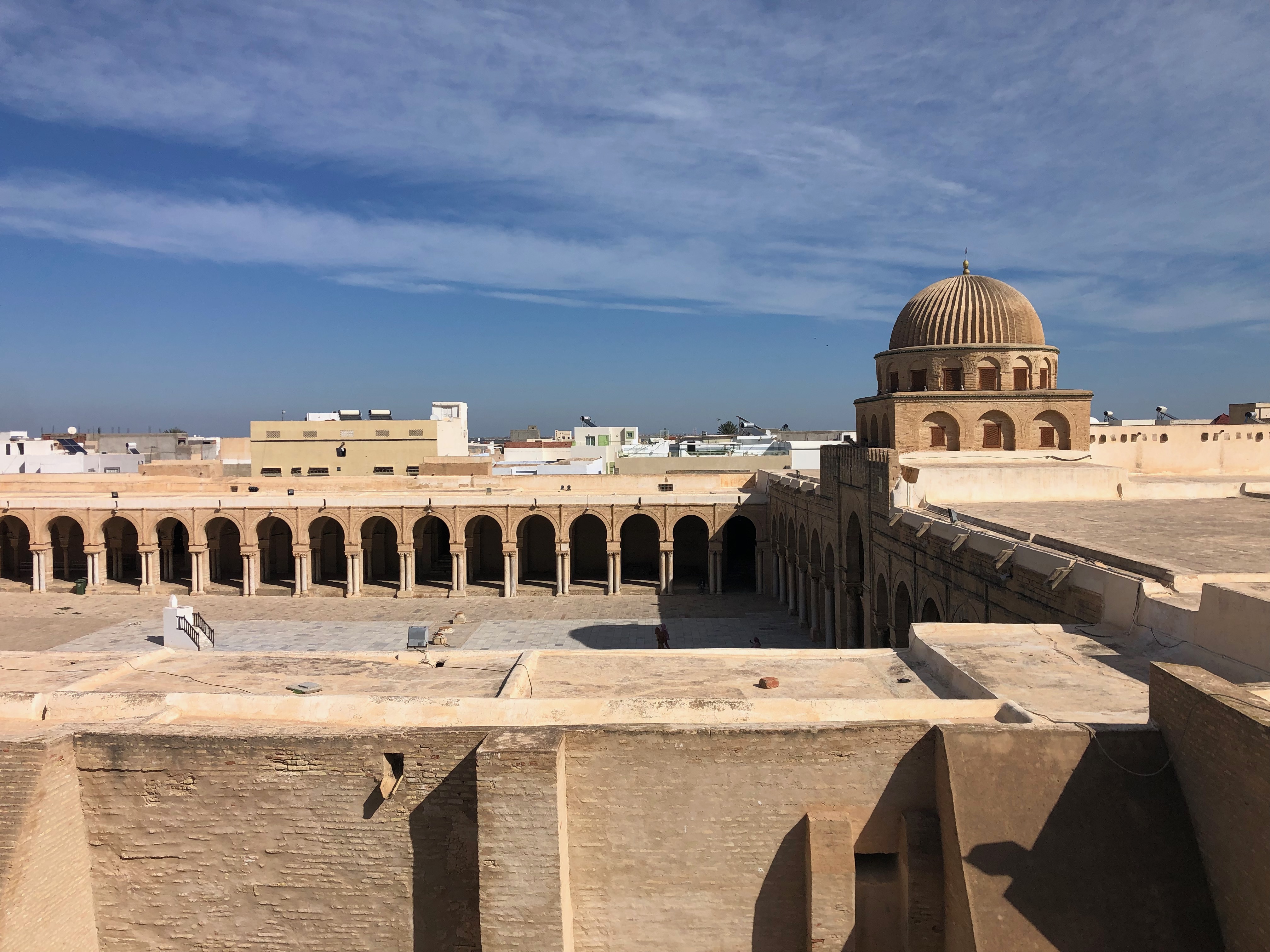
We heard that Kairouan gets to 40 degrees and higher in the summer. Despite the heat, the followers would arrive and pray, especially during Ramadan.


For lunch, the group enjoyed a traditional dish served with bread, followed by a visit to the historic water tank facility. (Not shown in the pictures, but harissa is a Tunisian chili paste that is very popular here)

 Look at the bread!
Look at the bread!
We walked around the town center of Kairouan, and learned more about how camels worked the wells in the past.
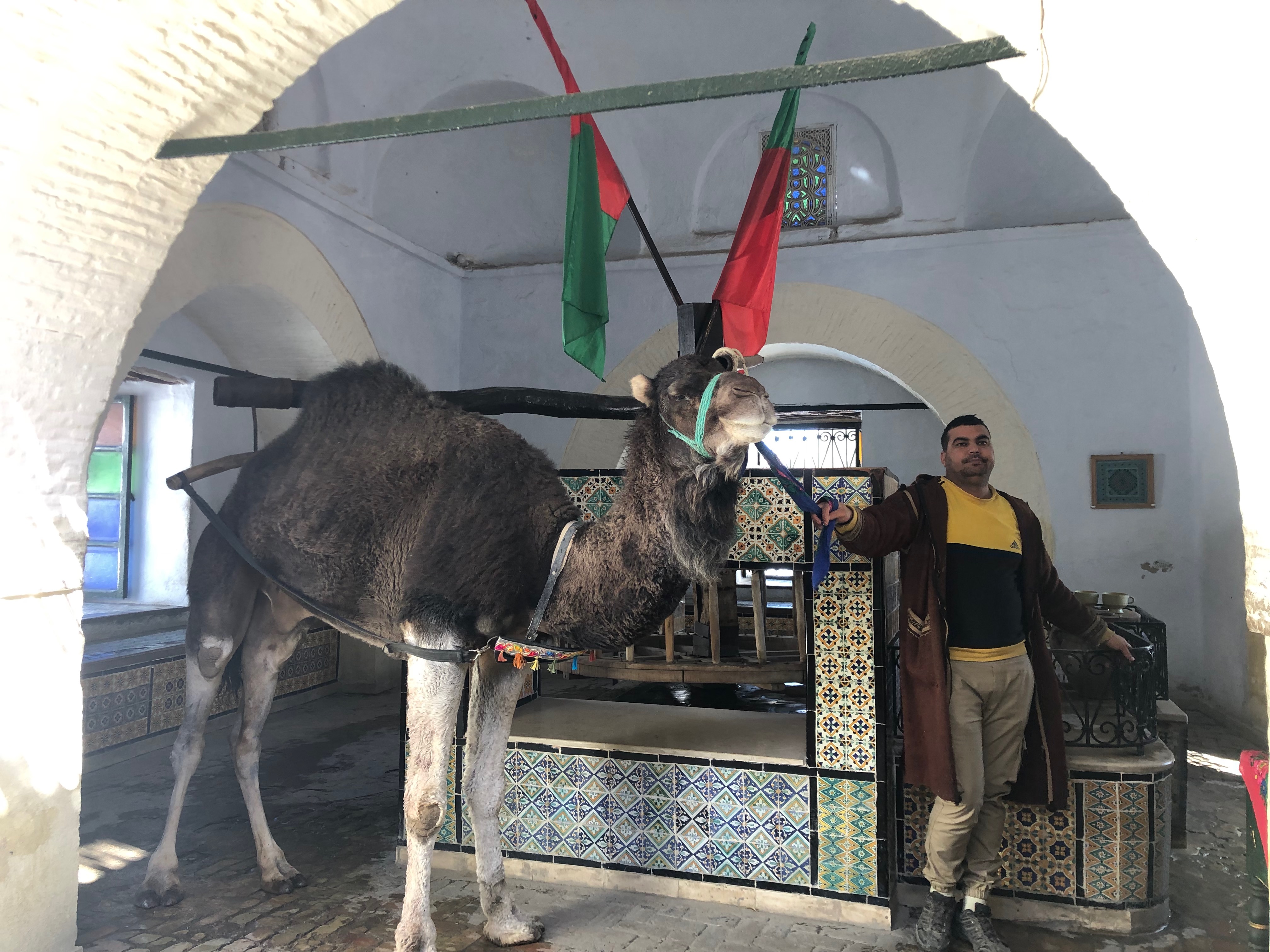
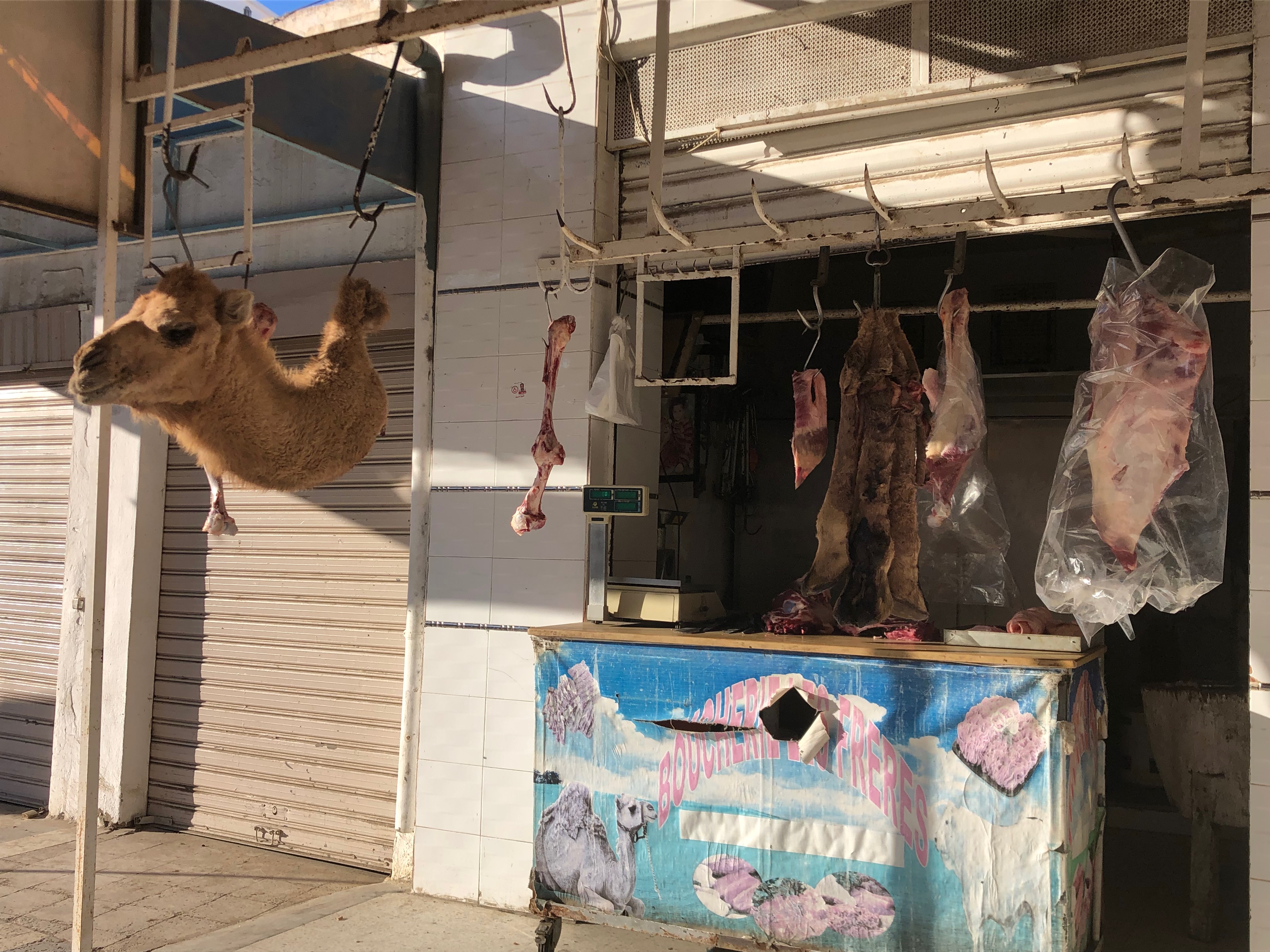 Camel working in the well | A butcher shop
Camel working in the well | A butcher shop
After an exhausting day, we relaxed by going to the Hammam. It was a memorable and amusing experience, especially since it involved my friend and I stripping down to nearly nothing in the steam room for an hour.
We discussed many things. Toutou shared many stores:
- He disliked the perceived condescension from some French people towards French-speaking North Africans in France.
- Algeria is Tunisia’s best friend. Egypt is too soft, and Morroco obviously has problems with Algeria and others.
The Hammam had very hot steam in the last room to the point where it was hard to breath. There were many father and son duos, who came here to get clean. We used this scrubber, where our dead skin came right off.
Toutou made this joke “I can see all the cupercinos and lattes coming off of you”, and for a second, I actually believed him!!
El Jem and Sfax
We spent the following day visiting El Jem, one of the most famous Roman amphitheatres in Africa.
On the train there, an off duty intelligence officer of Tunisia was sitting across from me. He and I got talking. It turns out that he is visiting family for a day trip to and from Tunis. He explained the general anti-American sentiment, and that there are resistences alongside Libya.
We also got to talking about what I do for work, and how I think about Tunisia. Afterwards, Abe wondered if he had been testing to see if I was an American operative.
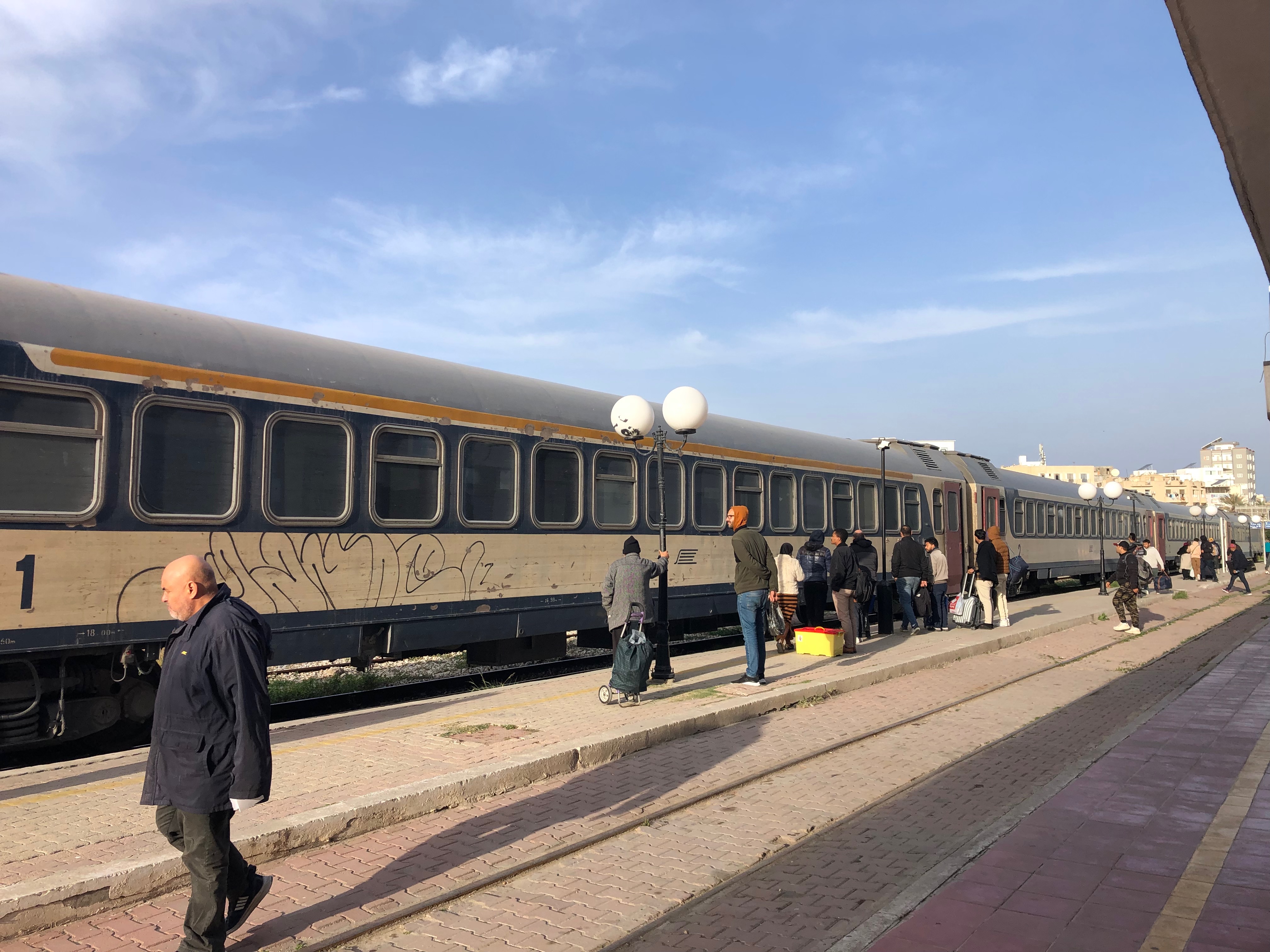
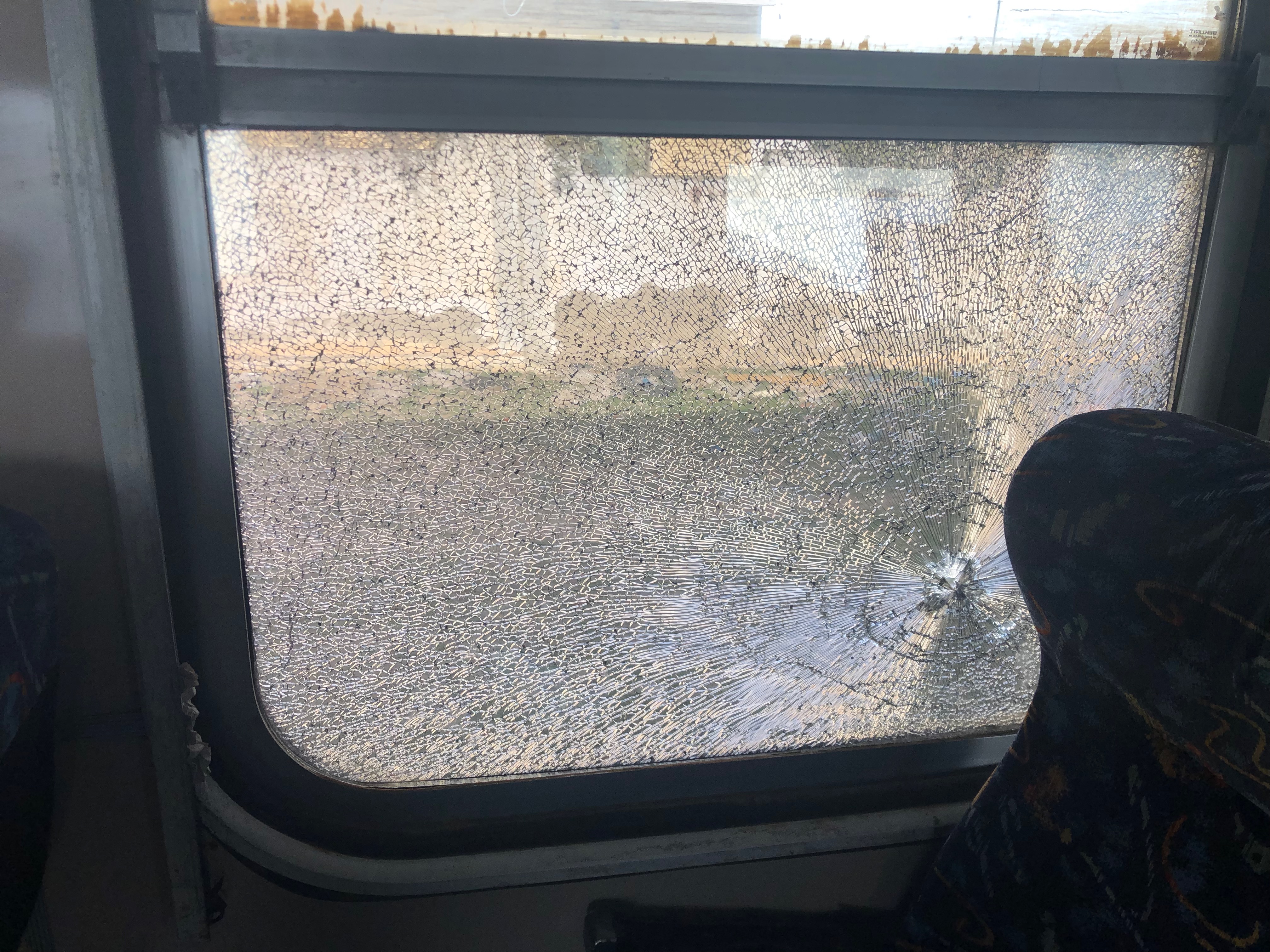
About three quarters of the trip there, we suddenly hear gun shots. Abe and I got down instantly, but the locals were less shaken. We learned that the gunshots were from juveniles targeting the train. We were definitely concerned about our safety, but thankfully no one was hit by the projectile.
I really need to not push my luck.
El Jem is very touristy, but the ‘wow’ is overwhelming.

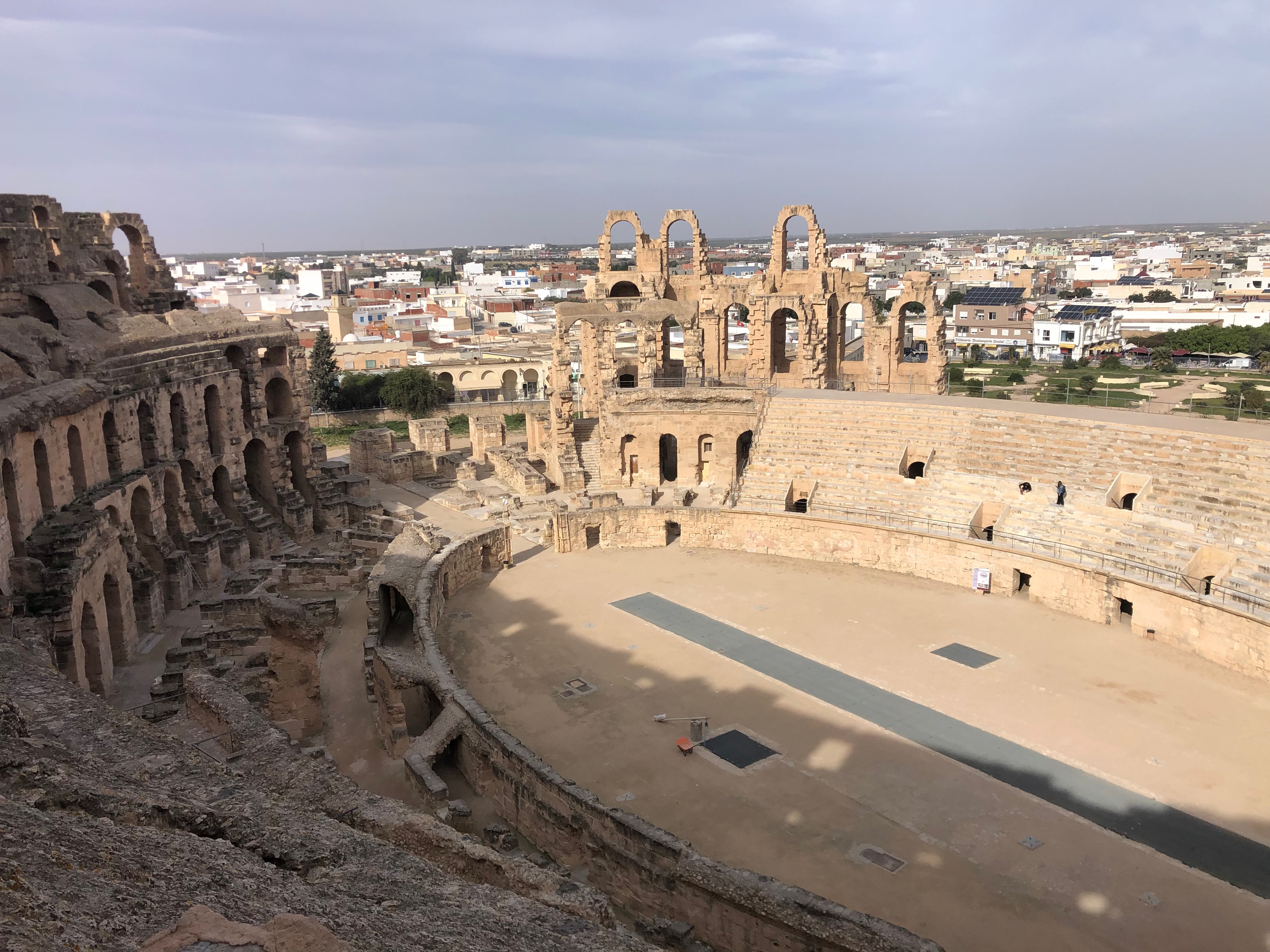
Abe and I got some local dates (fruit) and went to the museum. We went separate ways because he wanted to get ready for his date (not the fruit kind) that night with a local pharmacist whom he met.

Our other hostel friend, Abdul, (Syrian living in Germany) said that he wanted to visit Sfax, the second largest city of Tunisia located further south. I decided to go check it out.
Taking the louage to Sfax, we had a much easier time navigating the city, because Abdul speaks arabic!
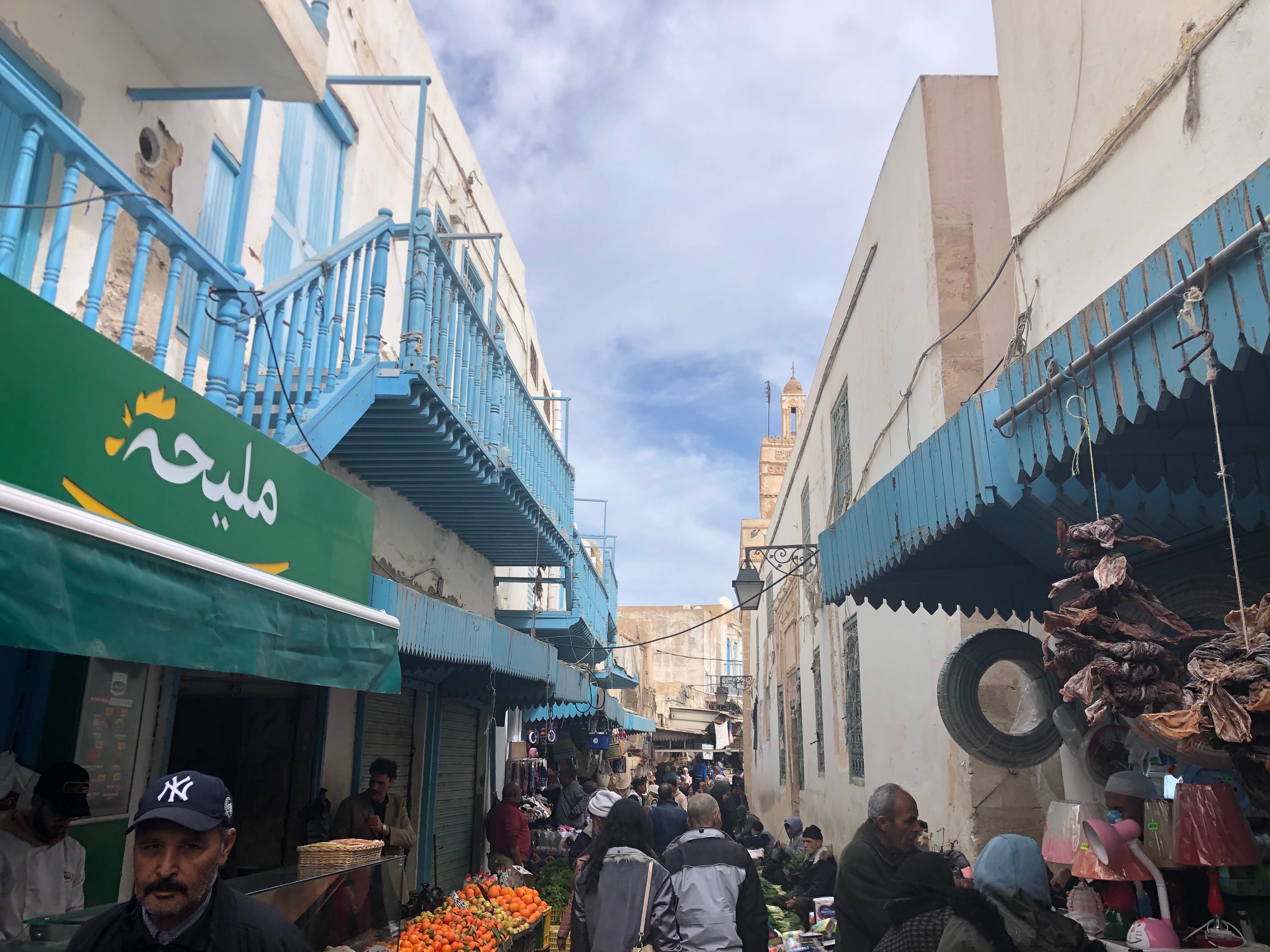

The medina in Sfax is expansive, surrounded by majestic walls and filled with numerous shops. The city is much less toursity and quite industrial. There is a big port, and many refineries all around.
Abdul and I had a $25 USD (quite expensive for Tunisian standards) dinner at a great fish place.

I hope Abdul and I will have the opportunity to meet again soon.
Saying Goodbye
I spent the last day of my trip traveling back to Tunis. I had some fantastic chicken couscous and drank some mint tea.
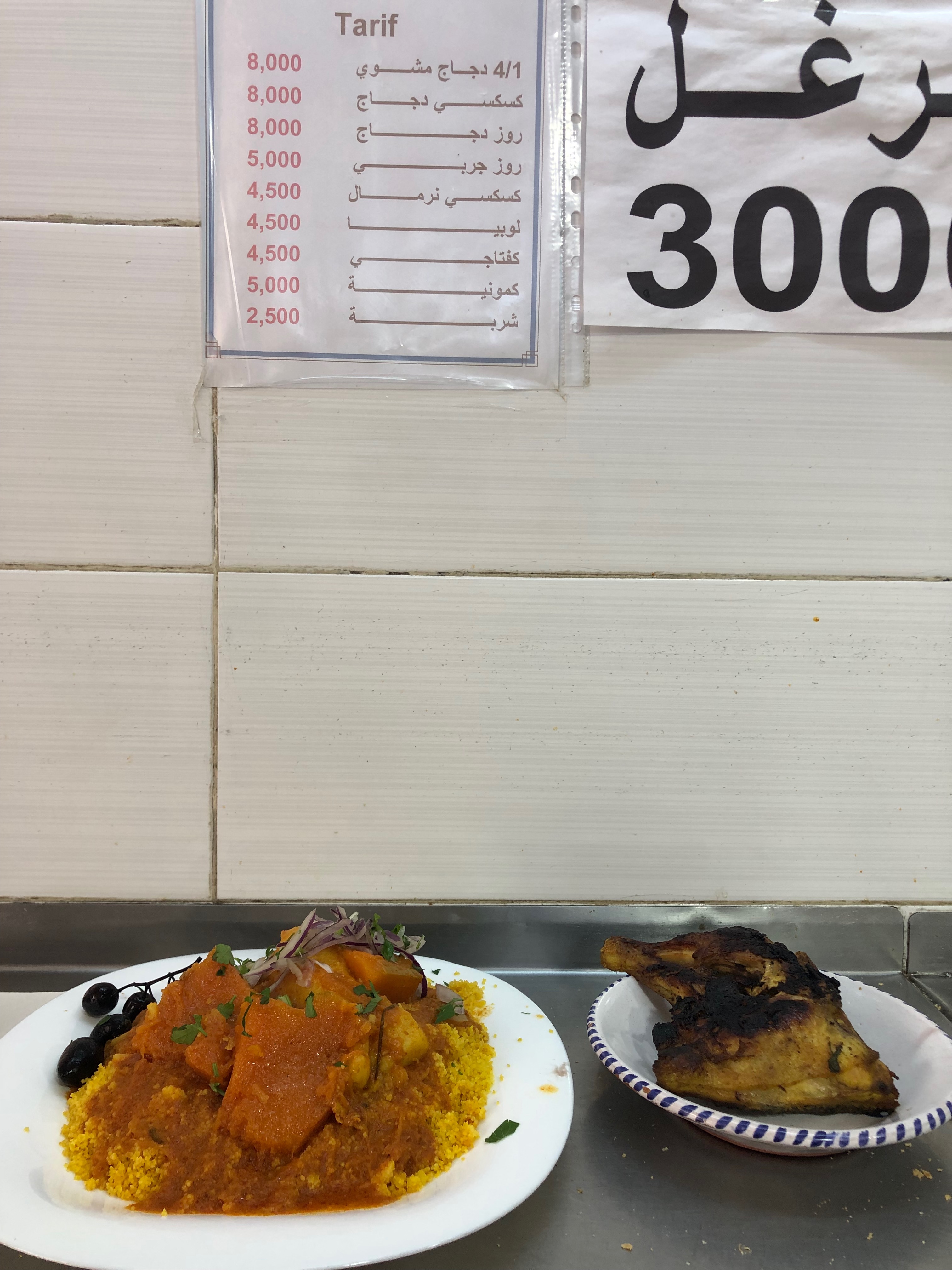
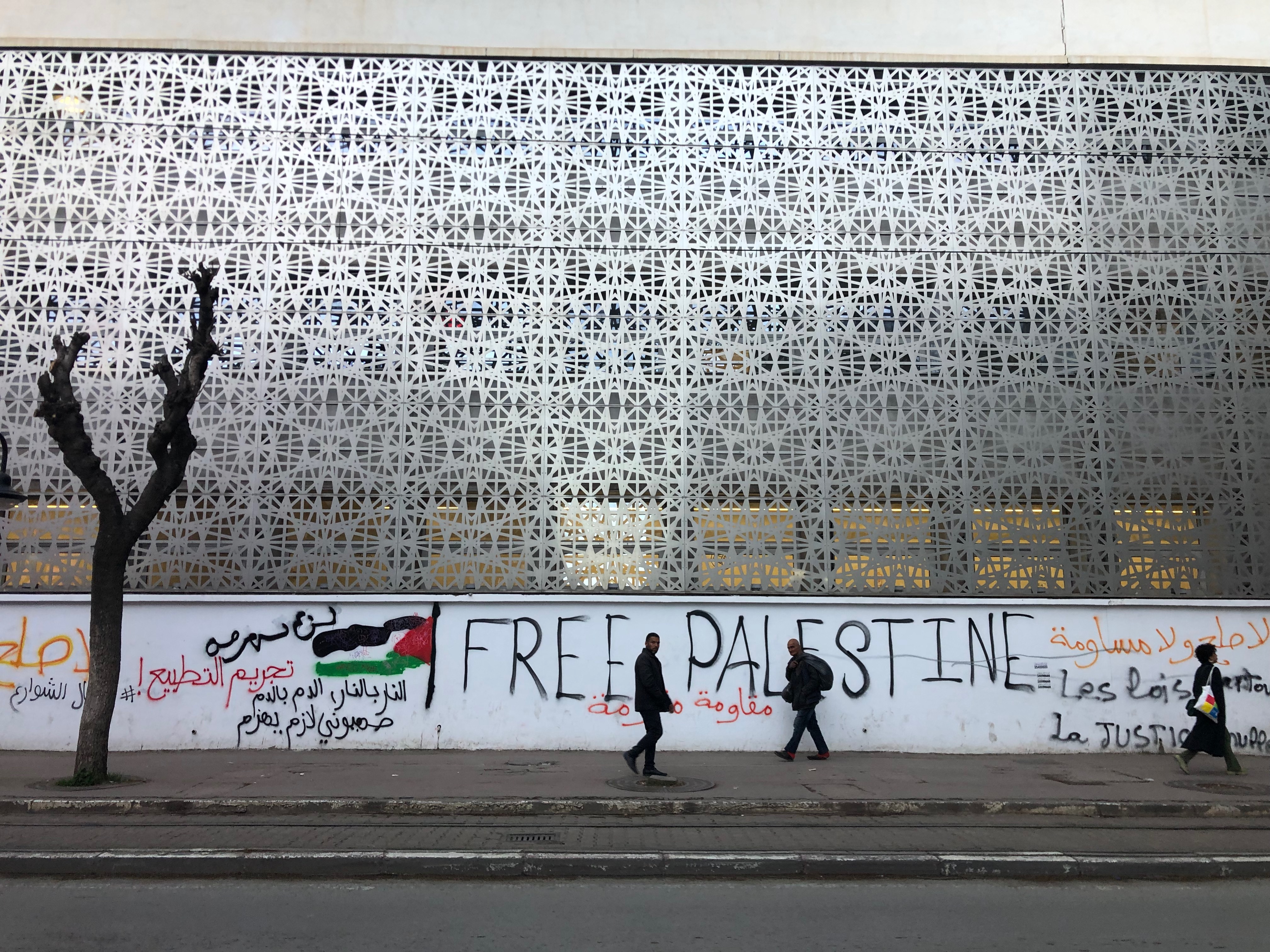
The global conflict is happening and of course Tunisians support their own.
[Receive future updates]